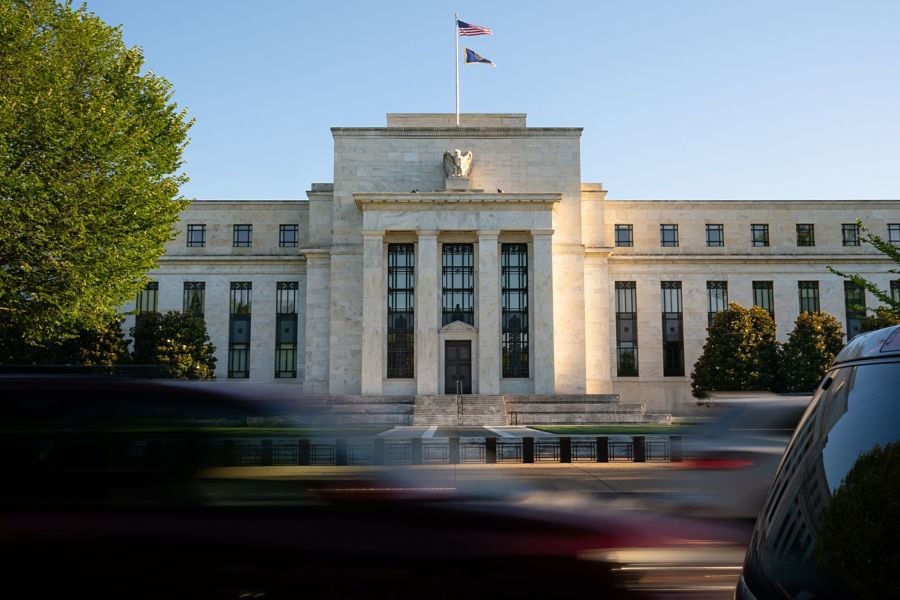

The Federal Reserve, in its quest to be as transparent as possible, has tamped down some of the numerous economic and market outlooks for 2022 by showcasing plans to hike interest rates as many as three times this year.
While some prognosticators, like Mike Reynolds, vice president of investment strategy at Glenmede Trust Co., say the Fed’s mid-December announcement “wasn’t inconsistent with our expectations,” others are adjusting on the fly.
“We see an economy that has grown strong enough that it can withstand removing the punch bowl,” Reynolds said, in a reference to the Fed’s extended low-interest-rate policy that has helped prop up the economy and forced investors into risk assets like stocks given the negative real yields of most bonds.
With inflation hovering around 6% heading into the new year, Reynolds thinks the Fed could get even more aggressive if a few rate hikes don’t do the trick of bringing inflation down at least a few percentage points “as we get into the meaty part of the year.”
Carl Ludwigson, director of manager research at Bel Air Investment Advisors, said as the Fed moves from being accommodative to tightening, “the degree of impact on asset prices will depend on the pace of that tightening.”
“The sensitivity of equities to interest rates is because the justification for relatively high valuations is low rates, and if that changes that would imply a repricing of multiples,” he said. “The only thing that makes equities look reasonably priced is that bonds are more expensive.”
Ludwigson points to the under-performance in 2021 of small-cap growth stocks as evidence that the market has already been pricing in higher interest rates on the horizon.
“Small growth has been punished this year because that’s the area where you find high valuation companies with low or no earnings,” he said. “Those story stocks are most sensitive to the change in interest rates.”
Ludwigson is in line with most market watchers in supporting equities over bonds, but with lower expectations for equities than in recent years.
Mike Lanier, managing director at Dial Capital Management, described the December comments by Fed Chair Jerome Powell as “dovish” enough to underscore the significance of inflation.
“He gave us assurances that he will be reactive and will always be reassessing, that’s dovish,” said Lanier, who added that the Fed comments “reaffirmed our existing outlook.”
“Inflation will moderate as [supply chain] bottlenecks go away,” he said. “The pandemic will also moderate. People need to recognize that globally, the pandemic is kind of a plus for the U.S. because we’re doing the least amount of lockdowns. It’s bad for the globe but we’re being better capitalists about it. We will open sooner and faster than the rest of the world when it’s finally gone, and that will be fuel for 2022.”
More articles in this series:

Chasing productivity is one thing, but when you're cutting corners, missing details, and making mistakes, it's time to take a step back.

It is not clear how many employees will be affected, but none of the private partnership’s 20,000 financial advisors will see their jobs at risk.

The historic summer sitting saw a roughly two-thirds pass rate, with most CFP hopefuls falling in the under-40 age group.

"The greed and deception of this Ponzi scheme has resulted in the same way they have throughout history," said Daniel Brubaker, U.S. Postal Inspection Service inspector in charge.

Elsewhere, an advisor formerly with a Commonwealth affiliate firm is launching her own independent practice with an Osaic OSJ.
Stan Gregor, Chairman & CEO of Summit Financial Holdings, explores how RIAs can meet growing demand for family office-style services among mass affluent clients through tax-first planning, technology, and collaboration—positioning firms for long-term success
Chris Vizzi, Co-Founder & Partner of South Coast Investment Advisors, LLC, shares how 2025 estate tax changes—$13.99M per person—offer more than tax savings. Learn how to pass on purpose, values, and vision to unite generations and give wealth lasting meaning
